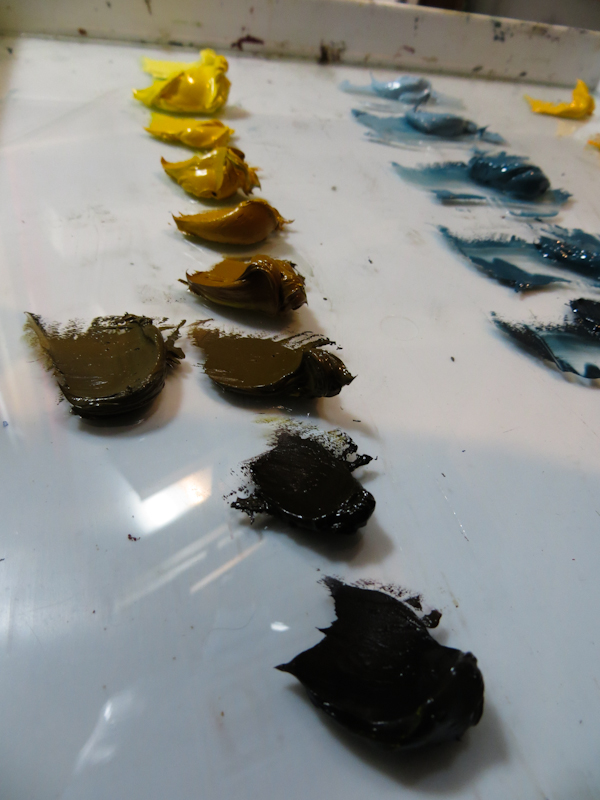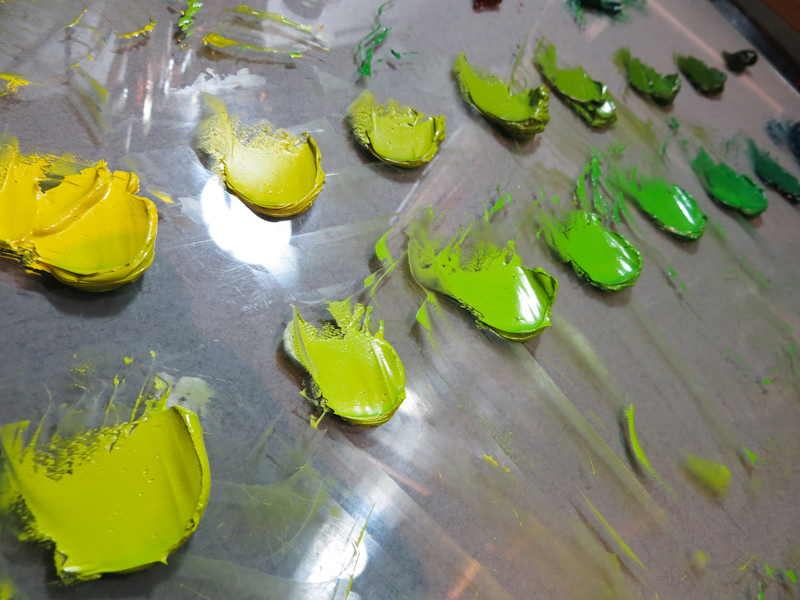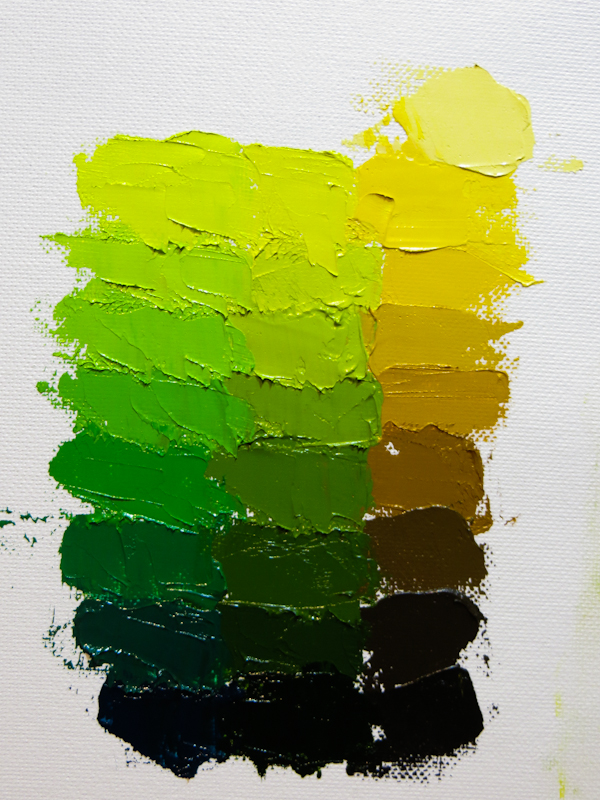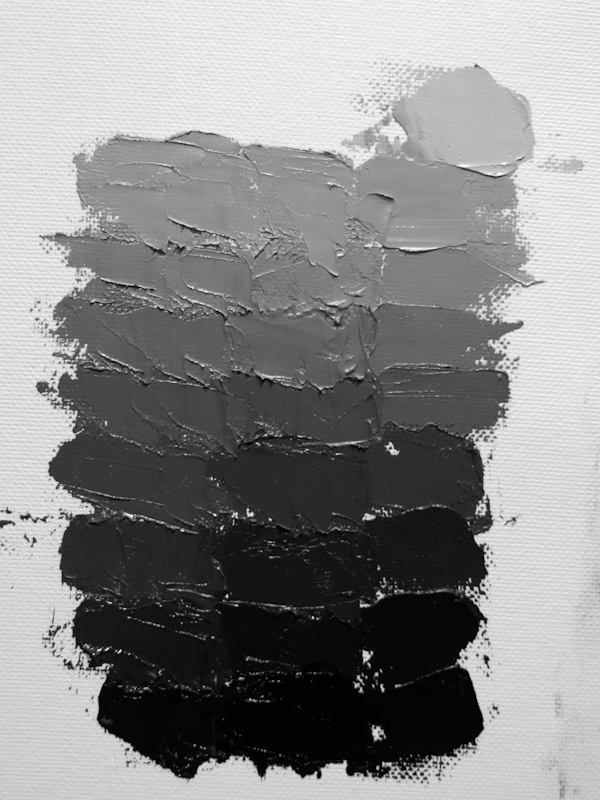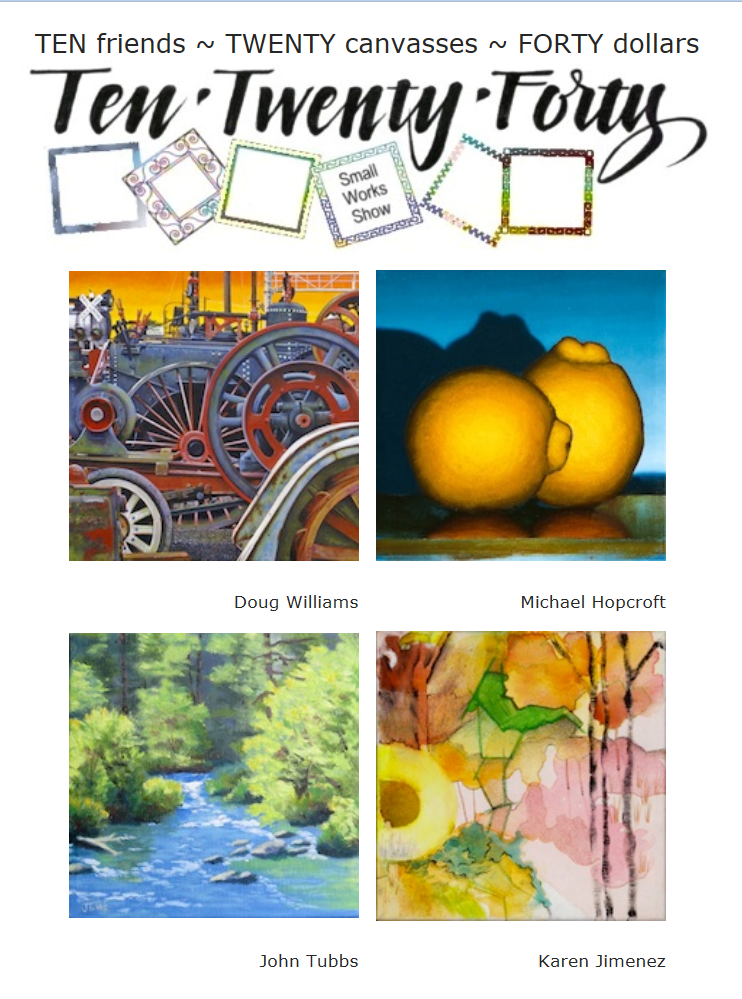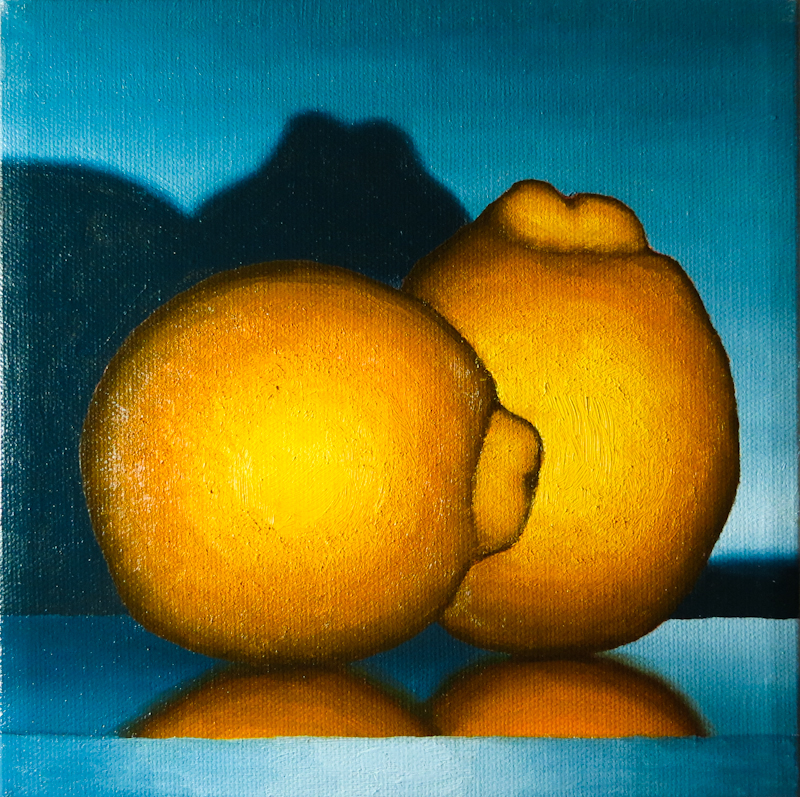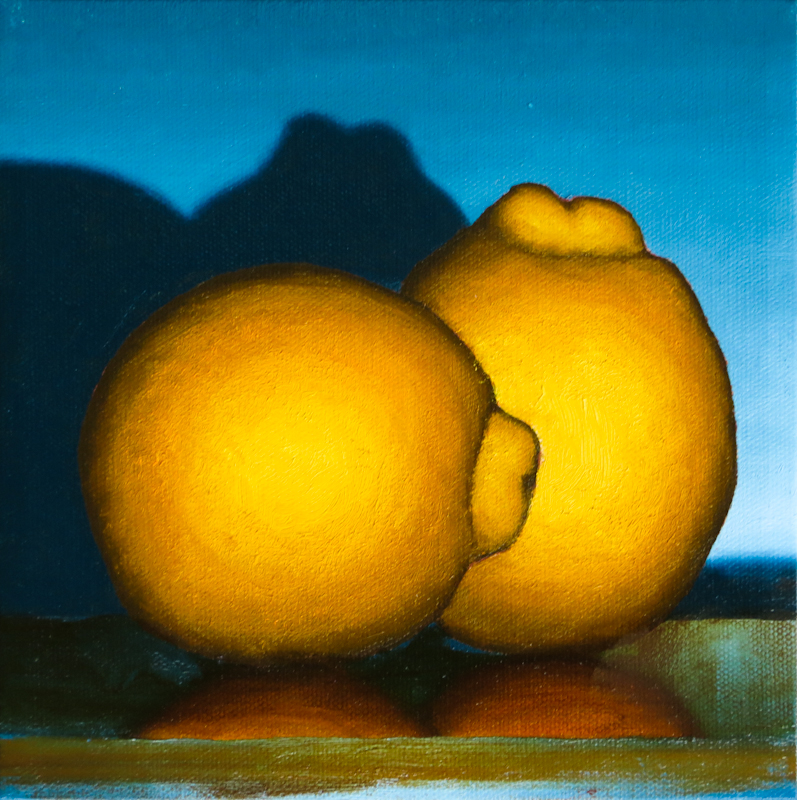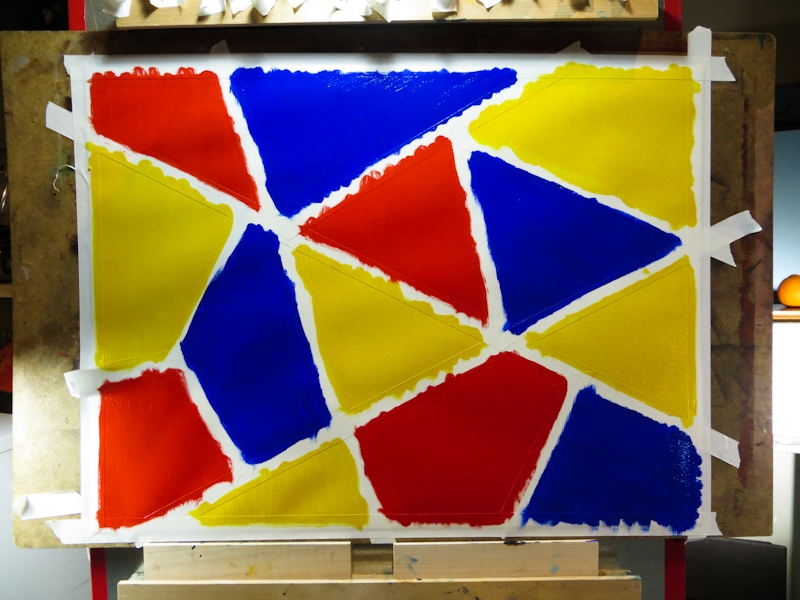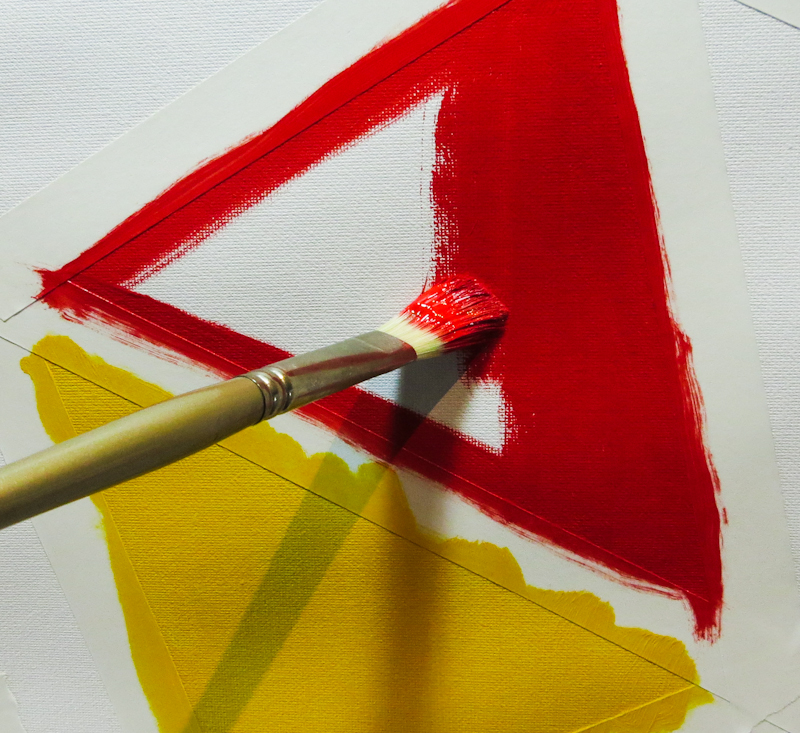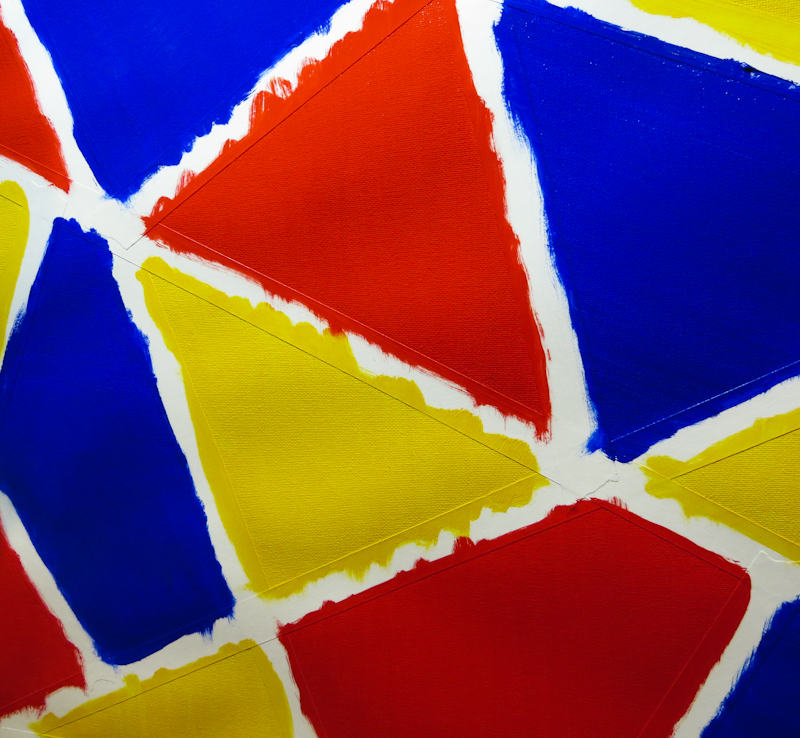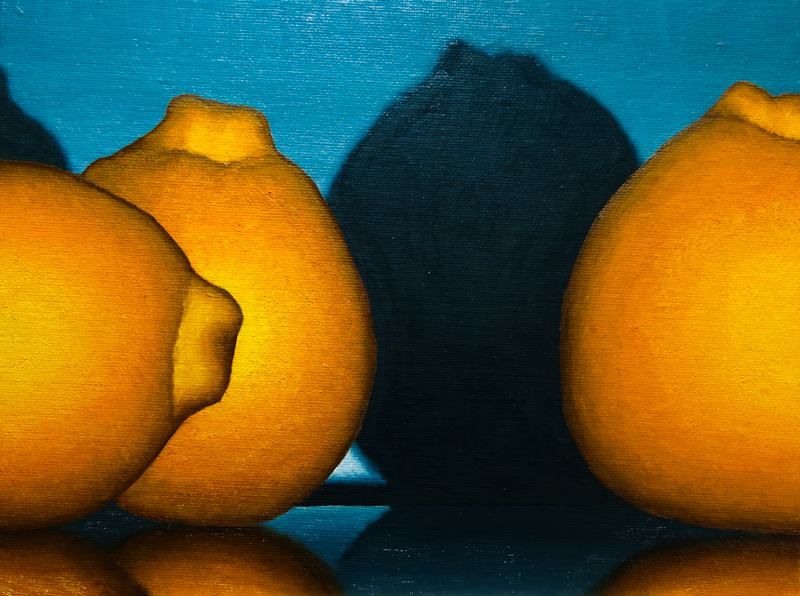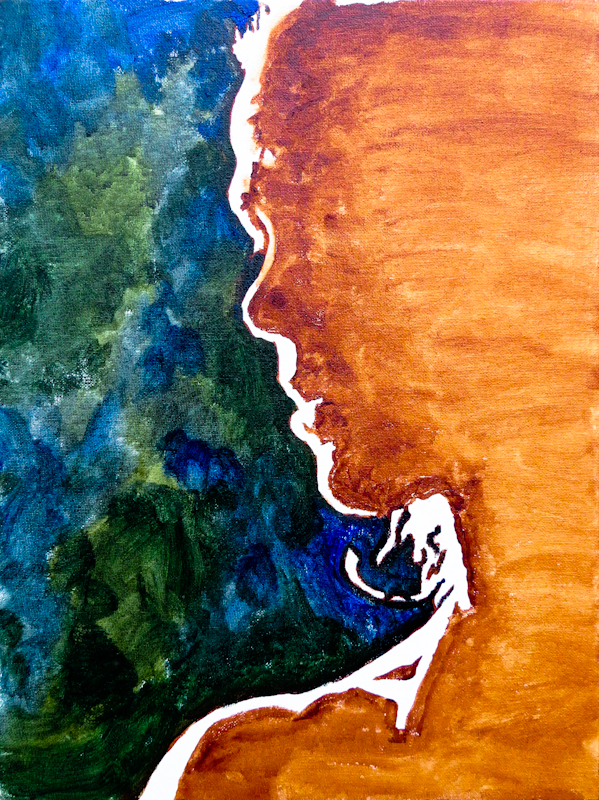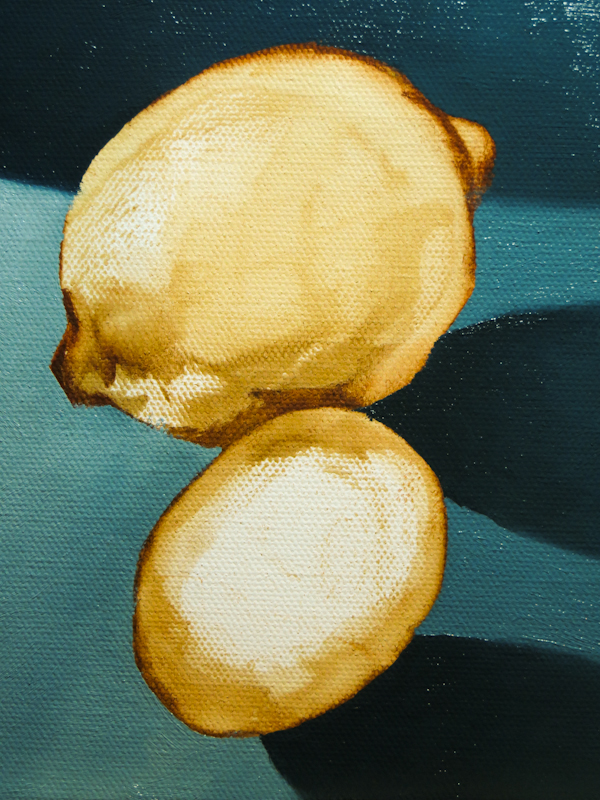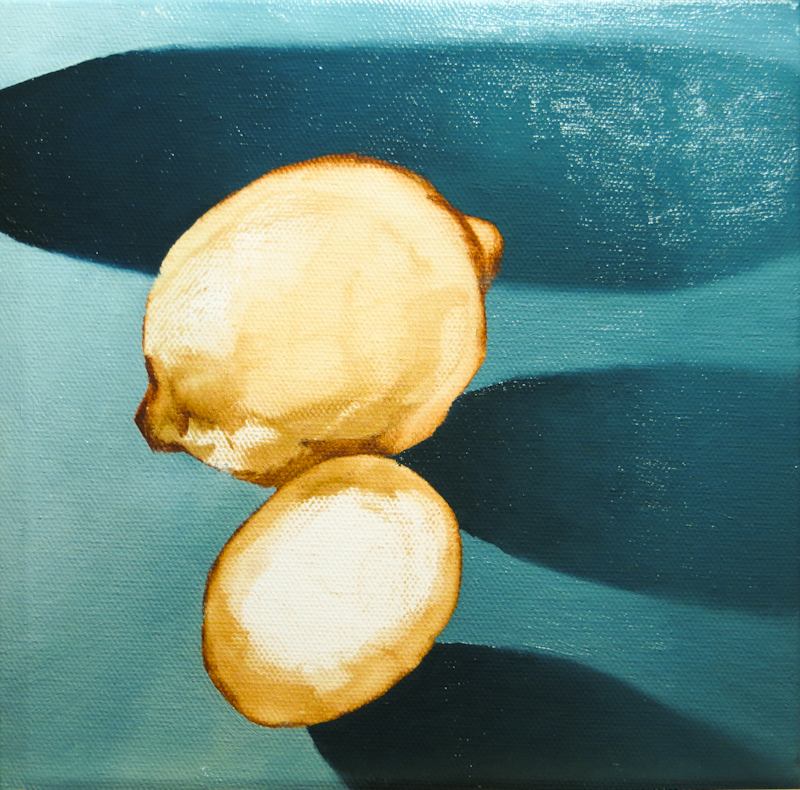I painted a lemon this evening for my 8″ x 8″ piece for the Maple Valley Arts show. The painting itself went quickly and was much easier than painting front-lighted oranges which require very delicate gradations in the light.
I tried to match the value of the shadows in the lemon with the value of the adjacent blue shadow. They look pretty close now, so my next step will be to soften the edge between the two regions, while bringing some of the blue into the yellow. I will do this after painting the lime so that I can better judge how much “lime” light will bleed into the shadow on the lemon.

The bulk of my evening was spent mixing a string of nine yellows. The string is based primarily on a mixture of Cadmium Yellow Medium, desaturated and darkened with a blend of Quinacridone Magenta and French Ultramarine. The values above pure Cadmium Yellow Medium were lightened with a mixture of Titanium White and Cadmium Yellow Light, which is might lighter than Cadmium Yellow Medium. I did need to offset the cool greenishness of the Cadmium Yellow Light with just a smidgen of Quinacridone Magenta. The dark end of the scale is based mostly on a mixture of Burnt Umber and French Ultramarine.
